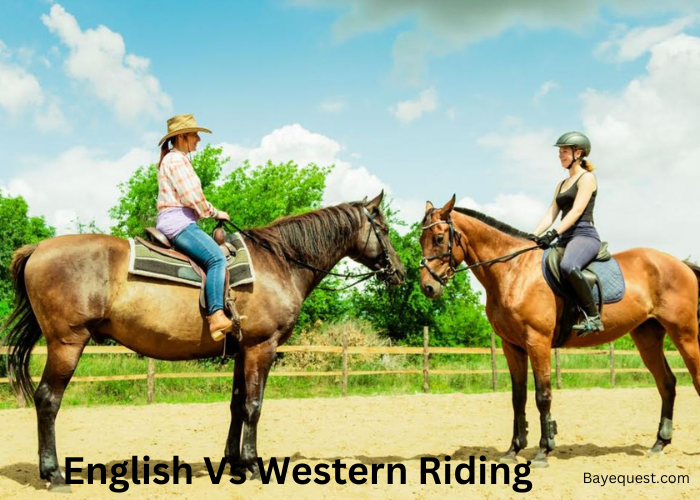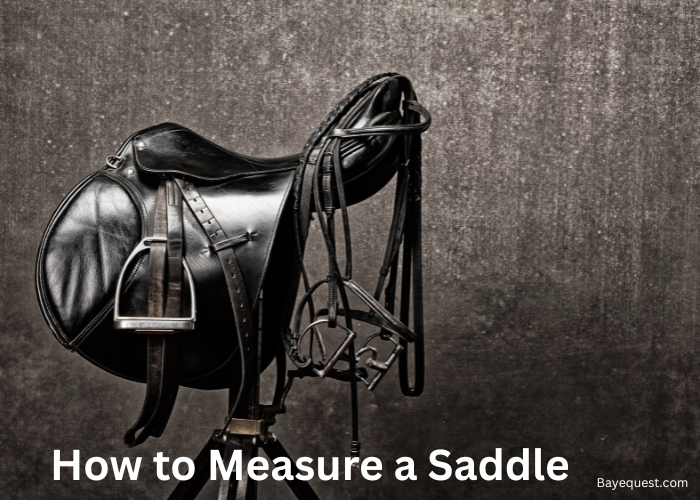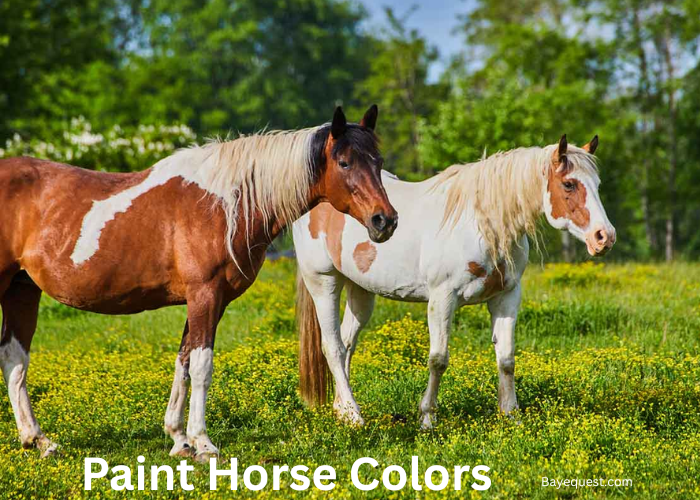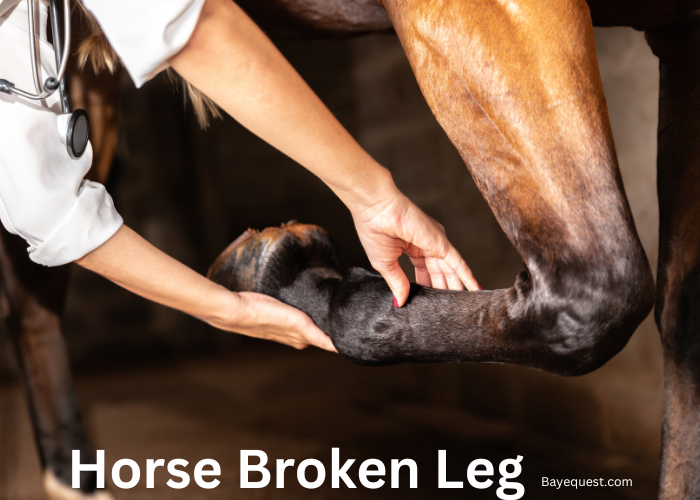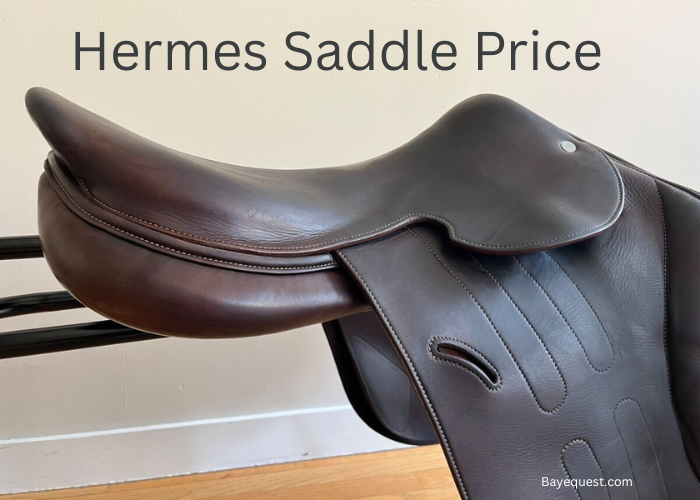If you’ve ever been caught between the refined precision of English riding and the bold, adventurous spirit of Western, you’re in good company.
This guide dives into the unique worlds of English and Western riding. It explores their styles, histories, disciplines, and everything in between.
Whether you’re an experienced rider or just starting out, join us to uncover which riding style speaks to you.
English Vs Western Riding? Key Takeaway
English riding focuses on precision and discipline. It is perfect for competitive sports like dressage and show jumping. Western riding emphasizes practical skills and comfort. It works well for tasks like cattle handling and trail riding. Both styles have unique benefits. Your choice depends on your interests and goals.
What is English Riding?
English riding originates from European traditions. It features precise, controlled movements.
This style is evident in casual riding and competitive events like show jumping and dressage.
Riders use sleek, minimal tack including a flat saddle without a horn. They focus heavily on posture and graceful movements.
English riding excels in events that require precision and flexibility. It emphasizes the strong partnership between horse and rider.
Whether gliding over jumps or performing in dressage, this style embodies elegance and finesse.
Pros and cons of English Riding
Pros
- Precision and technique: Focuses on detailed control and skill enhancement.
- Versatile disciplines: Offers a range of activities like jumping and dressage.
- Formal training: Provides deep knowledge of horse care and etiquette.
- Enhanced communication: Encourages subtle interactions for a stronger horse-rider bond.
Cons
- Cost: Requires significant investment in attire and equipment.
- Steep learning curve: Can be daunting for beginners due to its formality.
- Limited rough riding: Not ideal for trail or rugged outdoor riding.
- Higher injury risk: Sports like jumping pose greater injury risks.
What is Western Style Horse Riding?
Western riding started with the American cowboys. It’s all about handling cattle and riding over rugged terrain.
The saddle is heavier and has a horn on the front for roping cattle. Riders sit in a relaxed way, making it comfortable for long hours in the saddle.
This style is seen in rodeos, with events like barrel racing and roping. It’s practical, built for the outdoors, and has a strong sense of tradition.
Whether working on a ranch or competing in a rodeo, Western riding is about utility and the spirit of the American West.
Pros and cons of Western Riding
Pros
- Comfort: The saddles are designed for long hours of riding, making them comfortable.
- Practical skills: Focuses on useful riding skills like roping and herding.
- Relaxed style: More laid-back and less formal than English riding.
- Strong community: Has a close-knit, supportive community with deep cultural roots.
Cons
- Less precision: Less emphasis on the precision and technique found in English riding.
- Limited disciplines: Mainly focused on ranch work and rodeo events, offering fewer varieties of disciplines.
- Heavy equipment: The tack, especially the saddle, is heavier, which can be cumbersome.
- Cultural barrier: Might feel exclusive or hard to access without a background in or close proximity to Western-style communities.
What is the Difference Between English Riding and Western Riding?
Now, let’s explore the key differences between English and Western Riding:
1. Western Vs English Riding: History
Western riding dates back to the American West, where cowboys handled cattle and navigated rough terrain. It’s deeply rooted in practical ranch work.
In contrast, English riding comes from European military and aristocratic traditions. It focuses on discipline and formality.
The historical differences reflect their distinct cultural origins and purposes.
2. Western Riding Vs English Riding: Equipment
In Western riding, the saddle is heavy with a distinctive horn for roping cattle, and the tack is designed for durability and long hours outdoors.
English tack is sleeker, featuring a flat saddle without a horn, emphasizing close contact and precision in movements.
This difference in equipment suits the unique demands of each riding style.
3. English Riding Vs Western Riding: Methods of Riding
English riders maintain a close seat, perfecting tight control and posture for precise manoeuvres, commonly seen in dressage or show jumping.
Western riders adopt a more relaxed position. This riding style is suited for endurance and comfort over long distances.
It reflects on their practical, outdoor origins in ranching and trail riding.
4. English Vs Western Horse Riding: Events
English events focus on discipline and grace. These include dressage, show jumping, and eventing. Each tests the horse’s agility and the rider’s control.
Western events highlight practical skills. These are seen in rodeos like barrel racing and roping. They focus on speed, agility, and horse handling.
The styles reflect their origins: English for formality, Western for utility.
5. English Riding Vs Western: Type of horse
English riding uses Thoroughbreds and Warmblooded horse breeds. These horses are fast, agile, and graceful. Ideal for jumping and dressage.
Western riding prefers American Quarter Horses. They are quick and calm. Perfect for rodeo and ranch work.
6. Western Versus English Riding: Gaits
Western gaits are smooth and slow. They include the jog and lope. These gaits are comfortable for long rides.
English riding uses more varied gaits. These are the trot and canter. They require precise control.
The gaits suit the different needs of each riding style.
7. English Riding Versus Western: Attire
English riders wear formal attire. This includes breeches, boots, and helmets. It reflects the style’s aristocratic origins.
Western attire is rugged and casual. Riders wear jeans, cowboy boots, and hats. This style fits the practical needs of ranch work.
English Vs Western Horseback Riding Table Summary
Here’s a simple table summary comparing key aspects of English and Western riding:
| Aspect | English Riding | Western Riding |
| History | Originates from European traditions, focusing on military and aristocratic uses. | Developed in the American West, influenced by ranch work and cattle handling. |
| Equipment | Sleek, minimal tack, including a flat saddle without a horn. | Heavier tack with a distinctive horn on the saddle for roping. |
| Riding methods | Emphasizes tight control, precision, and posture. | More relaxed, focusing on comfort and endurance. |
| Events | Includes dressage, show jumping, and eventing, focusing on agility and precision. | Rodeo events like barrel racing and roping highlight practical skills. |
| Type of horse | Uses agile and fast breeds like Thoroughbreds and Warmbloods. | Often uses American Quarter Horses, known for quick bursts and calm demeanor. |
| Gaits | Features precise gaits like trot and canter for competitive performance. | Smooth and slower gaits like jog and lope, suited for comfort during long rides. |
| Attire | Formal and tailored, including breeches, boots, and helmets. | Rugged and casual, with jeans, cowboy boots, and hats. |
How to Choose Between Western and English Riding
Choosing between Western and English riding depends on your interests and goals.
Think about what you enjoy. Do you like precision and discipline?
English riding might be for you. It focuses on technique and form.
Are you into practical skills and comfort? Then consider Western riding. It’s great for long rides and outdoor work.
Consider what’s available near you. Check local stables. See what styles they teach. Talk to trainers. They can give insights based on your needs.
Lastly, try both styles if you can. Experience can help you decide.
You might enjoy one more than the other. Or, you might love both for different reasons.
Interesting read: Legendary Names for Western Horses.
Riding Western Vs English: FAQs
Can a Western horse be ridden in English?
Yes, a Western horse can be ridden in English style. However, the transition might require some training for the horse to get used to English tack and commands.
Is it easy to switch from English to Western riding?
Switching from English to Western riding can be easy. Especially because Western riding often has a more relaxed style and the tack is designed for comfort. The main adjustments will be in the riding technique and getting used to different equipment.
Is English or Western riding easier?
Whether English or Western riding is easier depends on the rider’s personal preferences and goals. Western riding might be considered easier for beginners due to its more forgiving and comfortable saddle and its relaxed riding style. English riding, however, requires precise control and balance, which might present a steeper learning curve.
What is the best riding style for beginners?
The best riding style for beginners often depends on what they aim to achieve and what is available near them. Western riding is easy to learn and comfortable, making it a good starting point for those new to horseback riding.
Riding English Vs Western Riding: Conclusion
In conclusion, choosing between English and Western riding comes down to what you’re looking for in horseback riding.
Whether you value the precision and discipline of English riding or the relaxed and practical approach of Western, each style offers unique benefits and challenges.
Consider your interests, what’s accessible in your area, and the type of riding you enjoy long-term.
Remember, both styles foster a deep connection with the horse and can provide a rewarding experience. So, why not try both and see which one you connect with the most?




